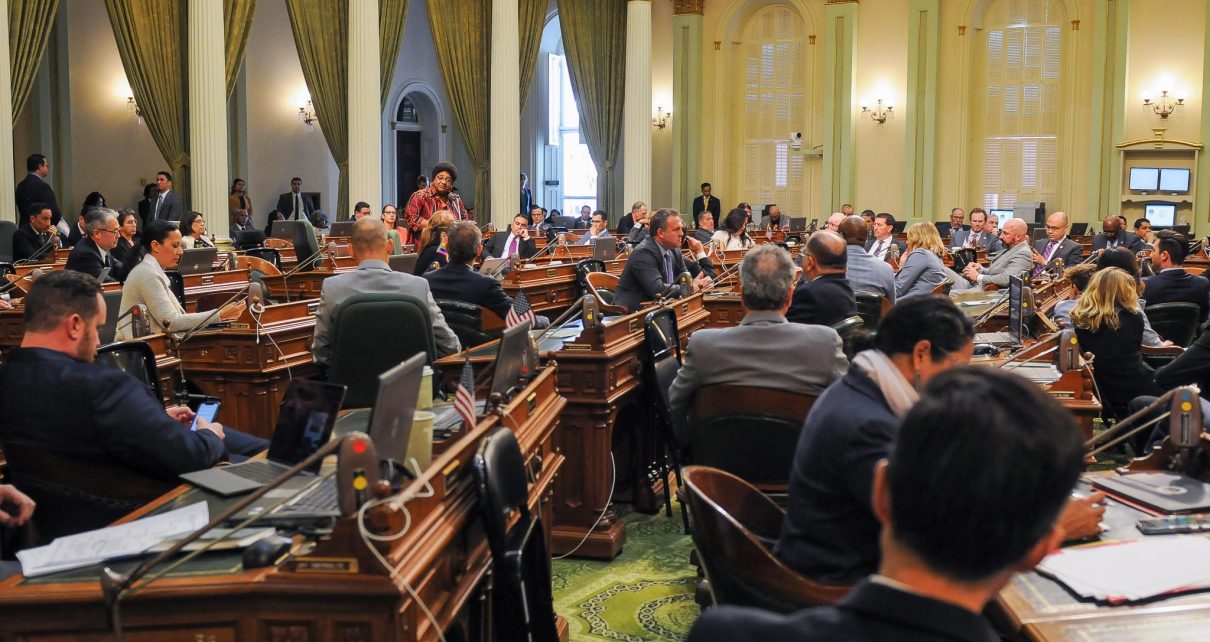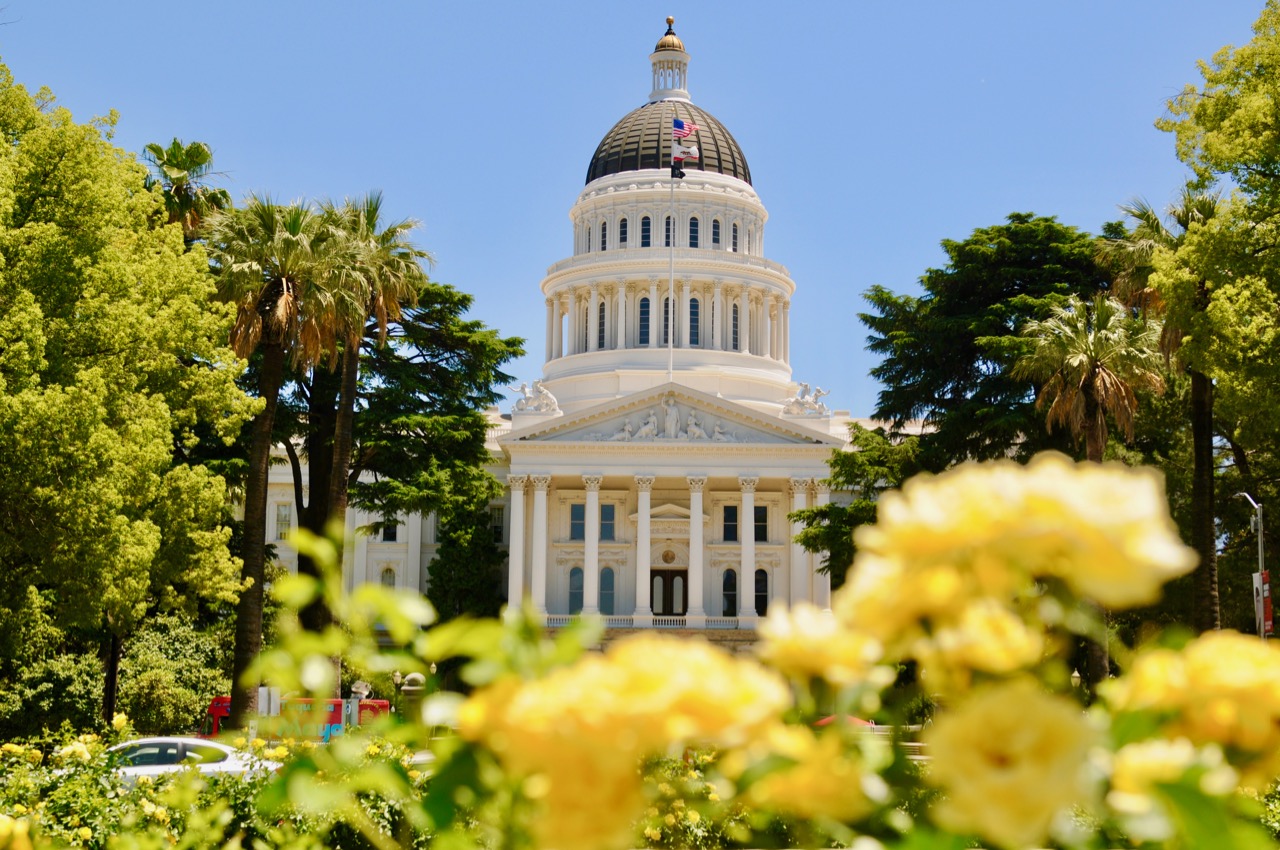
California State Assembly. (Photo: Kevin Sanders for California Globe)
Should There Be a Distinction Among the Types of Legislative History?
Should the judicial branch, when interpreting statutes, draw a distinction among the various types of legislative history?
By Chris Micheli, October 17, 2022 6:02 am
At the federal level, according to Harvard Law School Professors John Manning and Matthew Stephenson, “there has traditionally been a rough hierarchy of legislative history sources, with committee reports at the top, sponsor statements somewhere in the middle, and other statements in floor debates and hearings closer to the bottom.”
This raises the question of whether the judicial branch, when interpreting statutes, should draw a distinction among the various types of legislative history. While judges should be open to the wide range of legislative history materials, should there be a distinction among the different types?
This issue would seem to be addressed by the California courts in the decision of Kaufman & Broad Communities, Inc. v. Performance Plastering, Inc. 133 Cal.App.4th 26 (Cal. Ct. App. 2005) 34 Cal. Rptr. 3d 520. This was a 3-0 decision by the Third District Court of Appeal that has been approved by the California Supreme Court and has been cited approvingly in more than 100 other California appellate court decisions.
Kaufman & Broad Communities v. Performance Plastering is a critical statutory interpretation case in California. The appellate court opinion essentially (a) clarifies that a determination of the existence of an ambiguity occurs not at the time of a motion for judicial notice, but by the panel of judges hearing the appeal; (b) lists cognizable and non-cognizable legislative history for interpreting laws; and, (c) acknowledges the propriety of taking judicial notice of enrolled bill reports from a governor’s file.
This appellate court decision was based on Performance Plastering having filed a motion for the court to take judicial notice of various legislative history documents of 1998 amendments to California’s Revenue and Taxation Code.
According to the appellate court, “In order to help this court determine what constitutes properly cognizable legislative history, and what does not, in the future motions for judicial notice of legislative history materials in this court should be in the following form:
“1. The motion shall identify each separate document for which judicial notice is sought as a separate exhibit;
“2. The moving party shall submit a memorandum of points and authorities citing authority why each such exhibit constitutes cognizable legislative history.
“To aid counsel in this respect, we shall now set forth a list of legislative history documents that have been recognized by the California Supreme Court or this court as constituting cognizable legislative history together with a second list of documents that do not constitute cognizable legislative history in this court.”
Thereafter, the appellate court set forth legislative history documents that do or do not constitute “cognizable legislative history” as set forth below:
DOCUMENTS CONSTITUTING COGNIZABLE LEGISLATIVE HISTORY IN THE COURT OF APPEAL FOR THE THIRD APPELLATE DISTRICT
A. Ballot Pamphlets: Summaries and Arguments/Statement of Vote
B. Conference Committee Reports
C. Different Versions of the Bill
D. Floor Statements
E. House Journals and Final Histories
F. Reports of the Legislative Analyst
G. Legislative Committee Reports and Analyses
H. Legislative Counsel’s Digest
I. Legislative Counsel’s Opinions/Supplementary Reports
J. Legislative Party Floor Commentaries
K. Official Commission Reports and Comments
L. Predecessor Bills
M. Statements by Sponsors, Proponents and Opponents Communicated to the Legislature as a Whole
N. Transcripts of Committee Hearings
O. Analyses by Legislative Party Caucuses
P. Enrolled Bill Reports
DOCUMENTS NOT CONSTITUTING LEGISLATIVE HISTORY IN THE COURT OF APPEAL FOR THE THIRD APPELLATE DISTRICT
A. Authoring Legislator’s Files, Letters, Press Releases and Statements Not Communicated to the Legislature as a Whole
B. Documents with Unknown Author and Purpose
C. Handwritten Document Copies, Without Author, Contained in Assemblymember’s Files
D. Letter from Consultant to the State Bar Taxation Section to Governor
E. Letter from the Family Law Section of the State Bar of California to Assemblymember or Senator
F. Letters to Governor Urging Signing of Bill
G. Letters to Particular Legislators, Including Bill’s Author
H. Magazine Articles
I. Memorandum from a Deputy District Attorney to Proponents of Assembly Bill
J. Proposed Assembly Bill Which Was Withdrawn by Author
K. State Bar’s View of the Meaning of Proposed Legislation
L. Subjective Intent Reflected by Statements of Interested Parties and Individual Legislators, Including Bill’s Author, Not Communicated to Legislature as a Whole
M. Views of Individual Legislators, Staffers, and Other Interested Persons
Aa a result of the Kaufman case, California courts do make a distinction among the different types of legislative history as set forth above.
- Remote Marriage Licenses in California - July 27, 2025
- Legislative Policy on Bay Area Pilotage - July 26, 2025
- Small Craft Harbors and Waterways in California - July 25, 2025








2 thoughts on “Should There Be a Distinction Among the Types of Legislative History?”